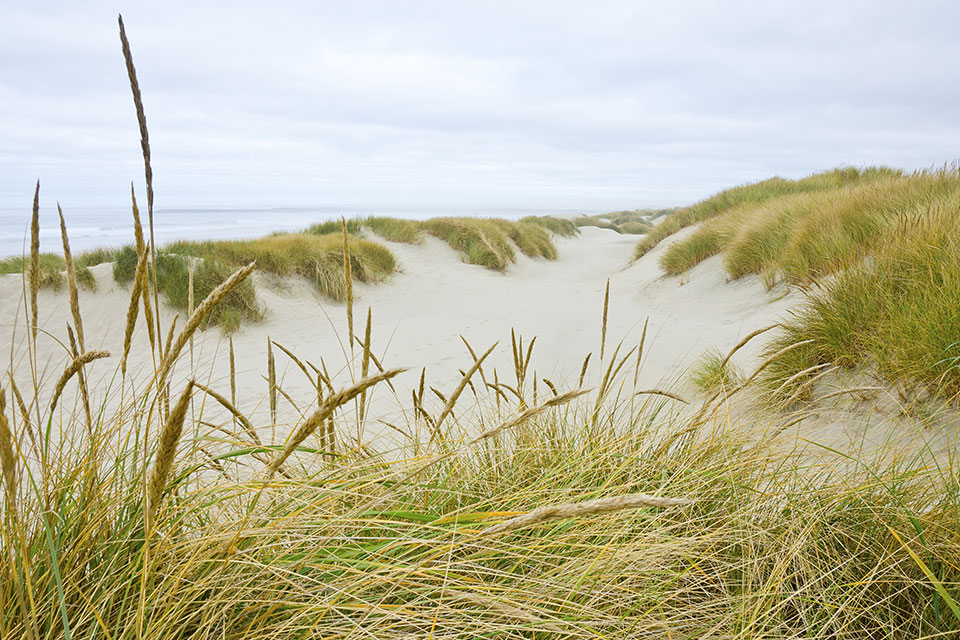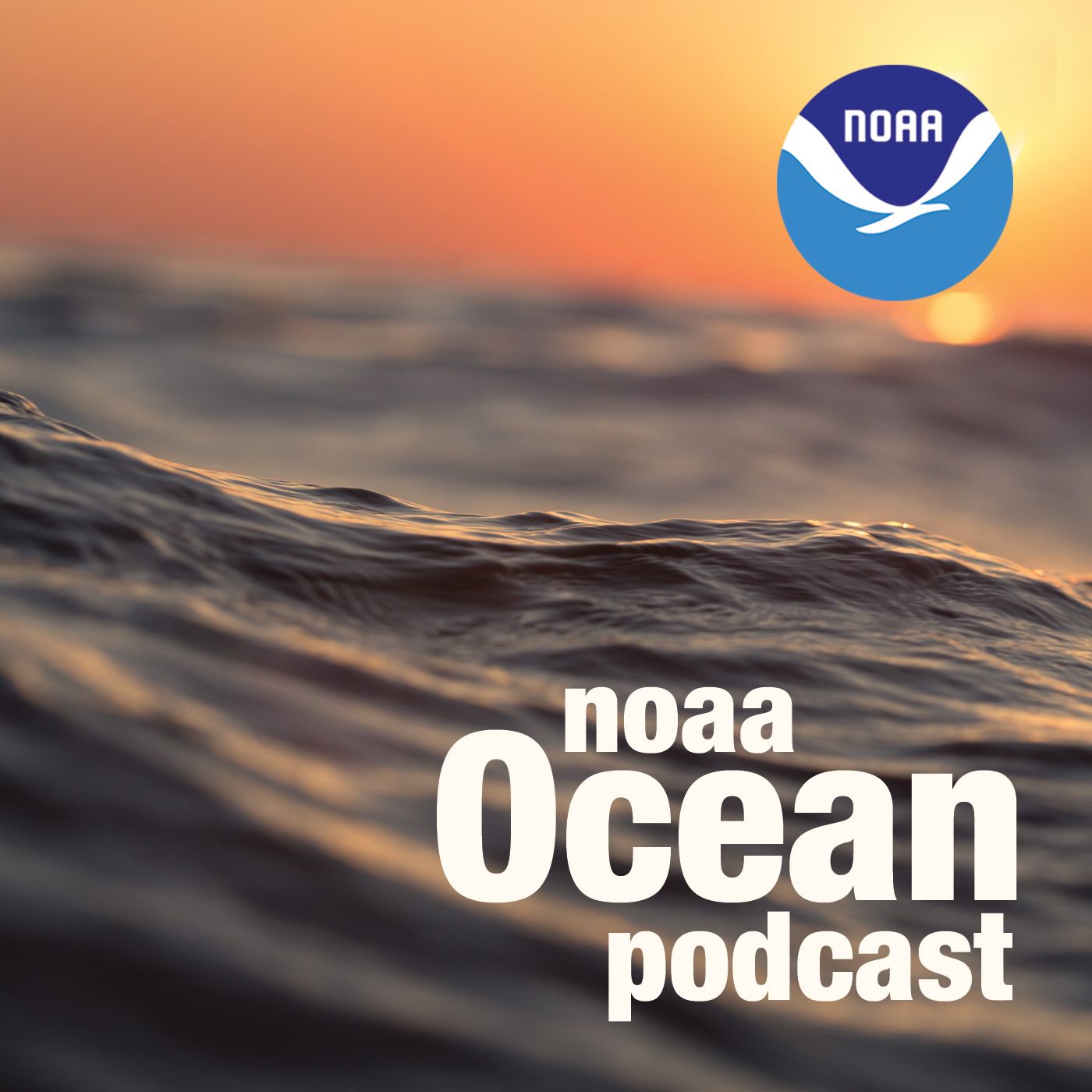Breaking Down Barriers: Natural Infrastructure
NOAA Ocean Podcast: Episode 37
Beach dunes, mangroves, wetlands, rain gardens, and bioswales are just a few examples of what experts call natural and nature-based infrastructure. In this episode, Kim Penn from NOAA’s Office for Coastal Management talks about how simple nature-based systems not only minimize coastal flooding, erosion, and runoff — but also form wonderful areas for recreation and tourism.

Natural "green barriers" help protect our coasts during severe storms and floods.
Transcript
HOST: This is the NOAA Ocean Podcast. I’m Troy Kitch.
About half of the people in our nation live near a coast. And if you live near a coast - especially if you live really close to a coast - you know it can often be a challenge ...
Sea level rise, high tide flooding, coastal storms, hurricanes, erosion ... nature throws a lot at our coasts. And it turns out nature also offers up the best ways to protect our coasts.
In this episode, we’re going to listen in on an excerpt from a podcast that originally aired in 2018 about natural infrastructure. It’s one of those things that most of us don’t think about, but here’s the thing: the most effective ways to protect our coasts involve ... nature. Let’s listen in to host Abby Reid’s interview with Kim Penn who works on improving our nation’s coastal resilience in NOAA’s Office for Coastal Management. Here’s Kim explaining what natural infrastructure as all about.
KIM PENN: Natural infrastructure is a term that we use to talk about the natural environment. It can include wetlands, forests and beaches, and also systems that are engineered or built to mimic natural ecosystem functions or processes. Sometimes we do get more specific and call those latter engineered systems “nature-based” infrastructure – and they would include things like rain gardens and living shorelines.
HOST: Can you talk a little bit more about the difference between “natural infrastructure” and “nature-based” infrastructure?
KIM PENN: Sure. So natural infrastructure can include wetlands, forests, beaches, dunes, mangroves, coral reefs, oyster reefs. Natural infrastructure approaches or solutions associated with those systems include conservation, protection, or restoration of those habitats.
Nature-based infrastructure is typically used when we’re talking about a more engineered landscape or system. And so it would include things like rain gardens, green roofs, bioswales, and permeable pavement. Those are all examples of stormwater management techniques that incorporate natural processes.
Another popular nature-based approach is a living shoreline. A living shoreline is a protected, stabilized coastal edge, constructed from more natural materials, which can include marsh plantings or stone sills, restored oyster reefs.
So, in my office, we are looking to advance the use of natural and nature-based infrastructure in coastal communities, because in addition to providing the benefits that you typically think of with natural systems – which include recreation and habitat, all the things that we enjoy going out into nature for – these systems provide really effective solutions for minimizing coastal flooding, erosion, and other hazards.
HOST: How exactly can natural systems protect communities from natural hazards?
KIM PENN: So existing coastal natural areas, such as wetlands or dunes, can help absorb flood waters and lessen the impacts of waves.
Over the past few years, after Hurricanes Katrina and Sandy, we've heard of the importance of coastal wetlands in southern Louisiana and off the coast of New York City.
We have some success stories of locations where we saw that in tact dune systems or coastal wetlands, areas that were, communities that were behind these impact coastal systems fared better than those that were not. Also, in more urban areas, nature-based infrastructure, such as rain gardens, can help with stormwater management, including absorbing runoff during rain events, protecting water quality, and storing excess water to prevent flooding in the streets.
Living shorelines can also help lessen the impact of waves and reduce shoreline erosion. One of the obvious benefits of natural infrastructure is wildlife habitat, but also recreation, like hiking, fishing and bird watching, natural areas can help to filter water, they are beautiful to look at, and they help to provide a real sense of space.
HOST: Are scientists and coastal managers the only ones that can make use of nature-based approaches?
KIM PENN: Almost anyone can really make use of nature-based approaches.
So if you’re a coastal landowner, you can make a choice about how to protect your shoreline from erosion. In many coastal states living shorelines are becoming a protection measure of choice, actually.
And even if you don’t live along the coast, you can plant a rain garden, use permeable pavers for your driveway. Schools, such as my son’s, are also incorporating rain gardens. And even at the state level floodplain managers will opt to protect or restore floodplains at watershed scale.
Again, natural and nature-based approaches can be implemented at so many different scales, that everyone can be involved. Through your neighborhood or your schools or your community groups. Volunteers can help with planting marsh grasses, or constructing a rain garden, or maintaining bioswales – there really is a great opportunity for local and state governments and nonprofits to partner, educate, and bring communities together.
HOST: That’s fantastic. Can you share a success story from a community that’s implemented natural infrastructure?
KIM PENN: Yes. There is actually a great recent one from Hurricane Harvey in Clear Lake, Texas, where the community had reclaimed an abandoned golf course and restored it to a 200-acre urban wetland. It performed exactly how it was intended by acting as a sponge to keep floodwaters away from area homes. You can see an amazing video showing the water rising during the storm but staying within the wetland area on our webpage.
The reclaimed area is called Exploration Green and the plan for the open space includes hiking, biking, pedestrian trails, athletic fields, and native grassland areas, providing those additional benefits that we talked about earlier.
KIM PENN:
We’ve really known about the diversity of benefits provided by coastal ecosystems for a long time. And my hope is that we stop thinking about natural infrastructure as sort of new and different option, but really as an integral component of building a resilient community. As something that just makes common sense - environmental, social and economic sense.
HOST: That’s it for this episode of the NOAA Ocean Podcast. Check our show notes for links to where you can learn more about the benefits of natural infrastructure, as well as Abby’s full interview with Kim Penn. And thanks for listening.

From corals to coastal science, connect with ocean experts to explore questions about the ocean environment.
Social